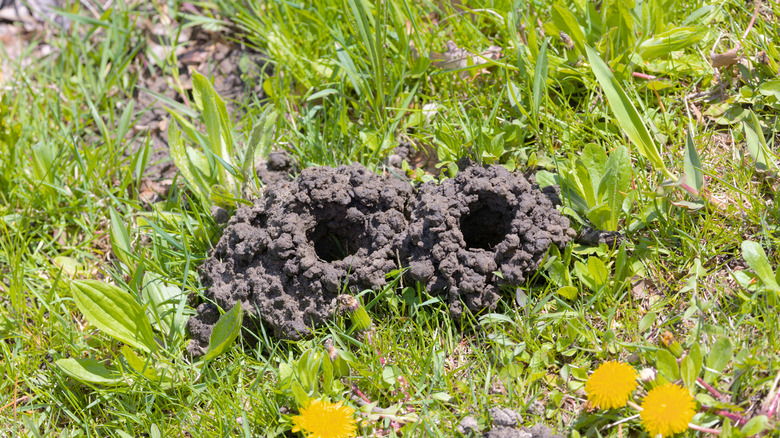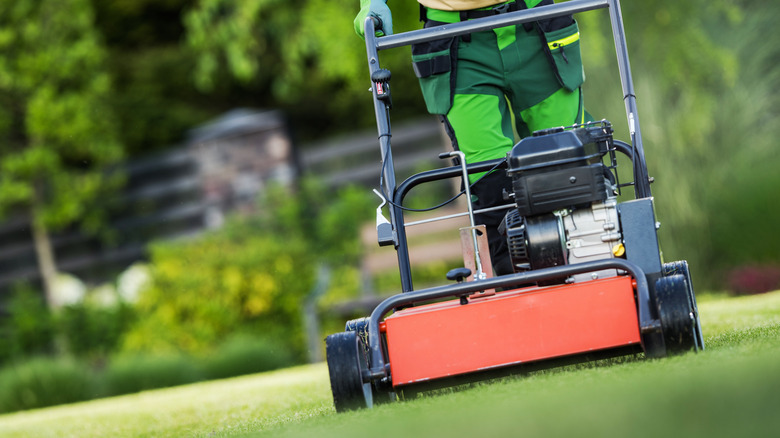Why Crawfish Mounds Are Popping Up In Your Yard
Your rich lush lawn could be ruined by the unfortunate sight of crawfish (also known as crayfish) mounds popping up in your yard. These lumps of earth are known as crawfish chimneys due to their smokestack appearance and often pop up in the spring. Underneath the chimney is a crawfish burrow, where the crustaceans live and tunnel through your yard's moist soil. You may think crawfish live only in bodies of water, but they can make themselves at home in your lawn after heavy rains or in yards with a high water table. The wetter the soil, the more enticing it will be, as crawfish will seek out the moisture they need for survival.
Managing these crawfish formations requires attention and care. Unfortunately, there's no one perfect way to "stop" them, as there aren't any chemical treatments or repellents legally registered for crawfish control. Instead, it's best to manage the problem with prevention. This is important, because crawfish chimneys aren't just an eyesore created by pests you may want to banish from your yard immediately, but they can also impede your lawn maintenance. As the mud dries and hardens in the sun, the mound becomes an obstacle lying in the path of your lawn mower. You may accidentally bump it, only to dull or even damage your lawn mower blades. The collision can even be dangerous, as flying bits of hard clay can also become a projectile, posing an injury risk to you and anyone nearby, including your pets. Your best approach for these invaders is making your yard less attractive in the first place.
How to prevent and get rid of crawfish holes in your lawn
As crawfish love moisture, the easiest approach to control the conditions in your lawn. First, you can try knocking over the chimney so you can safely mow that area. You can also try to lower the water table by improving the environment with useful drainage solutions, such as aerating any compacted soil. Take a look at your watering schedule to reduce the frequency and depth that you water, especially in wetter areas. However, if you're in a rainy spell, you might just have to wait out the problem, or use traps to physically remove the crawfish. Depending on your location, you may need permission to relocate the crawfish from local wildlife authorities. There may be homemade remedies listed online but experts urge you don't use these unregistered methods, as you may contaminate the water and local wildlife.
It may be frustrating to see crawfish in your lawn, but they're also a good sign of the cleanliness of your area as they try to avoid polluted water. They're a vital part of the ecosystem — they feed on plants and fish and serve as a food source for over 240 species of fish, birds, and mammals. In many areas, their habits are under threat from dam development, as well as water pollution, leading to 65 endangered species. Eventually, as the soil dries, the chimneys will disappear. In the meantime, you can try avoiding the chimneys or, alternatively, embracing them. If the area is always soggy, consider adding wetland plants to create your own miniature marsh and help out local wildlife.

